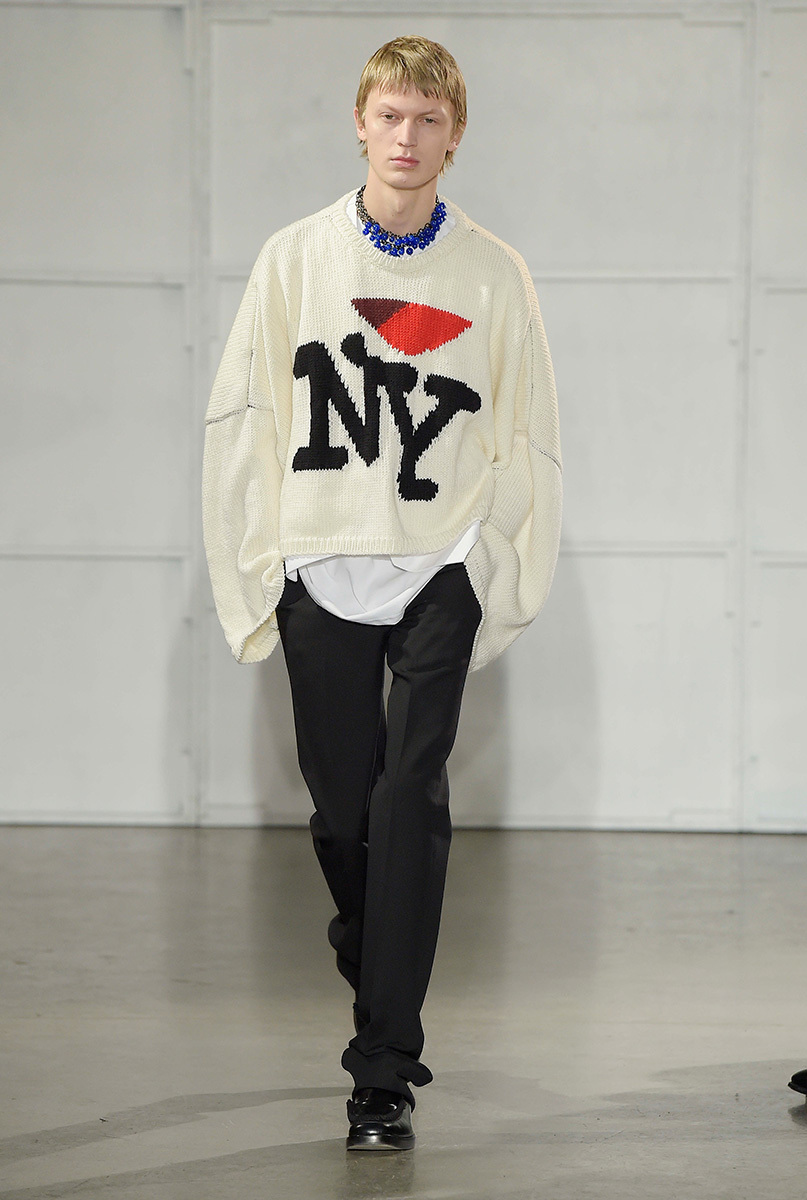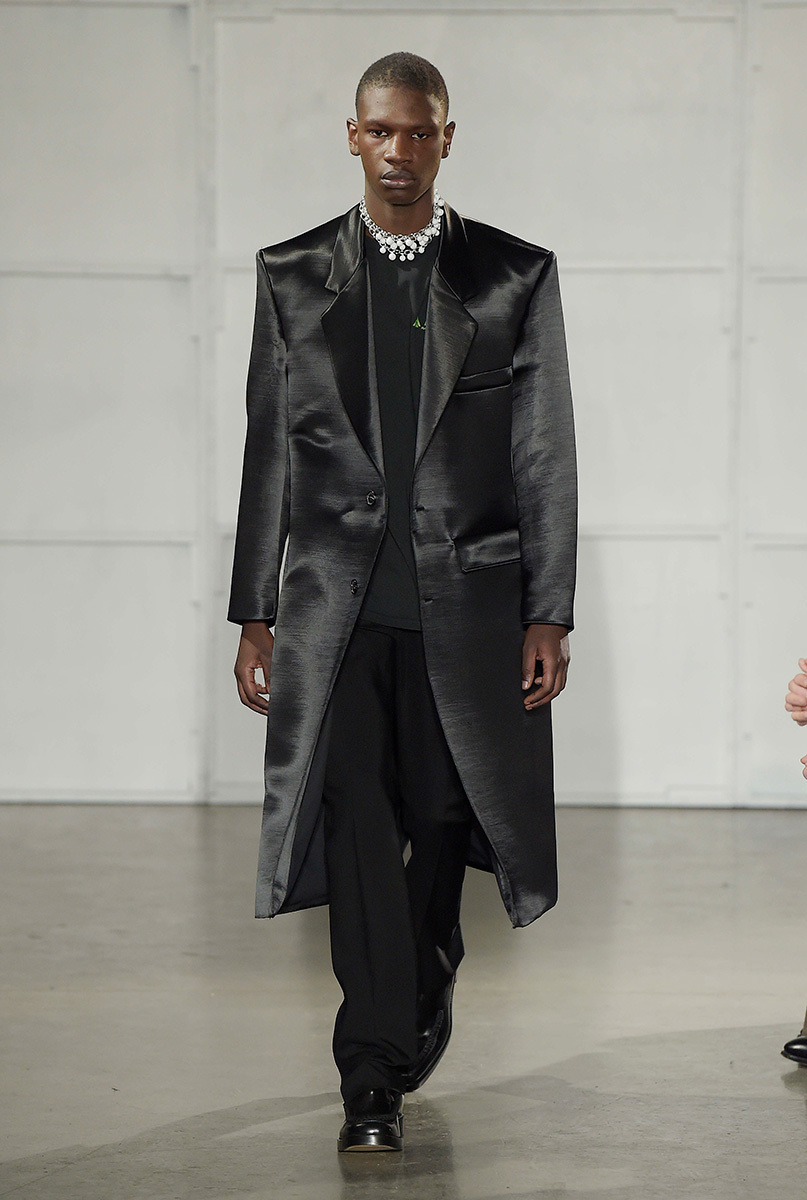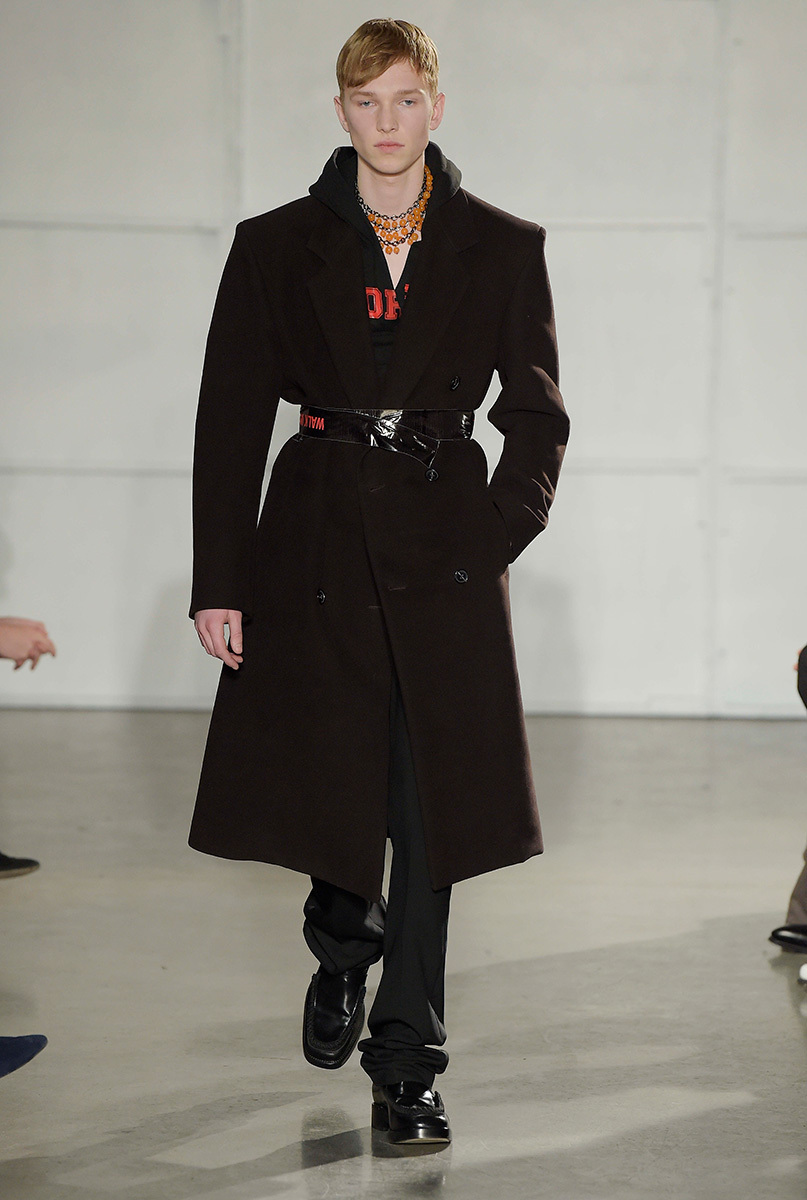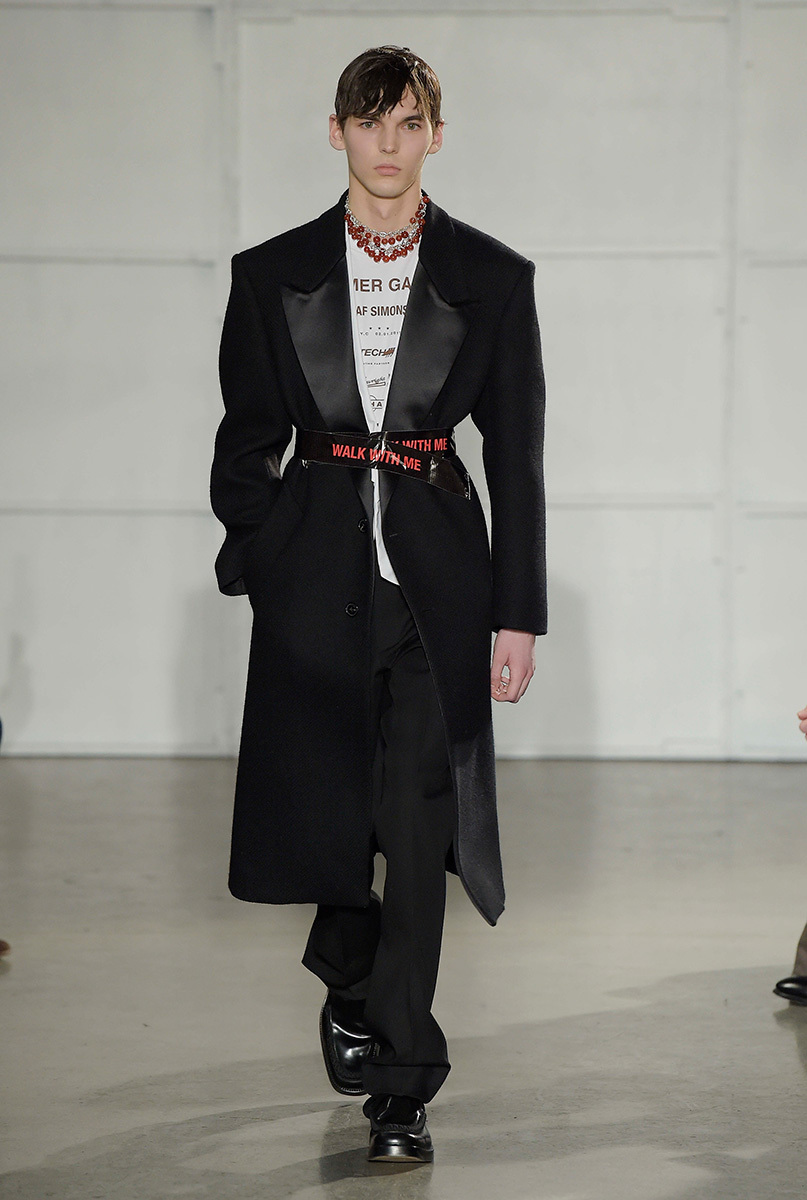There is that eerie sense of forewarning in America at the moment. The early 30s have become a clichéd reference to the political situation unfolding here already, but actually witnessing a group of people having to wait to join the passport queue at JFK, or the lawyers with banners waiting in arrivals — “Have you seen anyone be detained?” — feels a little bit like that scene in Cabaret when Liza Minnelli and Michael York visit a beer garden and a uniformed kid starts singing “Tomorrow Belongs To Me.” Eek. “If you say youth should stand up against what’s happening in this country, I would say yes,” Raf Simons declared after his highly political fall/winter 17 collection on Wednesday evening, his first on New York soil. “And if people like me and other people could be an inspiration in what we say and think and show, I would be really proud.” His show was an outreach to the youth of America and the world to take action against the new political circumstances in this country, now the home of Simons, who recently moved here after accepting the creative director job at Calvin Klein where he’ll present his debut collection in a week’s time.
Read: Raf Simons and the future of American menswear.

“I’ve been coming to New York for more than 20 years so now I’m in a very different kind of environment, but coming to live here I wanted to go back to how I experienced it in the beginning and combine it with how I experience it now. It’s this kind of fresh, young attraction to the city and everything it stands for, in combination with what’s happening in a reactive sort of way — the political situation,” Simons explained. He took the token ‘I love NY’ tourist t-shirt and transformed it into an intricate knit — courtesy of a major collaboration with Woolmark — and plastered garments with the words ‘Thank you’, a gesture of gratitude for the way he’d been welcomed here, but also to the values New York represents. He mentioned that moment when you first see the Statue of Liberty visiting New York as a child. “It was very much about me going away from my parents, and there was a very strong idea about how the boy relates to the mother and the father,” he said, noting how elements such as the necklaces related to his mother and the formal coats to his father.

“And then the love for the US, specifically New York,” he continued, going back into the political sphere. “While we were working on it, suddenly you find yourself in this situation, like, ‘My god, you just moved here!’ And you can only bring an energy of something that kind of stands against it. I think that’s my challenge now.” As a Belgian in America, Simons represents the feeling a lot of Europeans are dealing with at the moment. While America isn’t ours, its strong cultural impact on us, and our love for so many of this country’s values, makes things personal for us — it’s why London was filled with Brits protesting President Trump and his so-called travel ban two nights before Simons’s show. “I can only see this city as a city with incredible energy, incredible inspiration, incredible people,” he said of New York. “I always pick up a lot from where I live, and I think there’s an incredible freedom in the street, the way the young generation dresses. It’s very strong.”

What he’d seen since he moved here became the overriding sentiment of the collection: “Youth project” read scotch tape punkishly wrapped around the waists of ceremonial coats. (He should really produce it and sell it by the roll, come August.) “There was a do-it-yourself attitude. As a mindset I want to refer to punk but not as an aesthetic. Punk was a reaction to things that were happening. The country stood up. It was a reaction from a young generation of people, who did a kind of creative dress code but it was a reaction, a political moment,” Simons reflected, wearing one of his big ripped knits from last season. “I think it’s always been about not only being inspired by youth but also inspiring youth. The label is 22 years old now and it’s still very much seen as label that’s inspiring to youth. It’s an energy I think we will all have to activate. We have to activate the possibility of youth having a strong voice. I think it’s really important.”

And so, Simons scattered tape with the words “Walk with me” around the collection as an invitation to come together and make that change. “Now it’s very much about what you want to say,” he pointed out, highlighting his departure from collections of more subliminal messages. “It’s very much about that. Not always in your face — sometimes it’s just ‘I love you’, because it’s also a constant focus on the idea of beauty and romance and believing in each other; friendship, romance, all that.” Simons’ youth-centric work has always been rooted in something undeniably empathetic often veiled in poetic filters, but this season was different—clearer. To the new New Yorker, time somehow felt too precious not to be entirely straightforward in the message he wanted to convey. This was political Raf Simons using his platform and doing his part. “I feel like I have to do something,” he said. “It doesn’t matter if you reach out to ten people or a hundred thousand, I think when you have a voice you should use it.”
Read: The gender politics at the heart of this season’s men’s shows.****

Credits
Text Anders Christian Madsen
Images courtesy of Raf Simons
